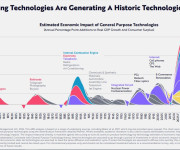How In-Memory Computing can improve Customer Service

The extremely fast processing in-memory computing can offer leads to a significant increase in terms of performance, by delivering fast reporting, managing events better, helping entrepreneurs make better decisions and eventually improving the customer satisfaction. In-memory computing is a broad topic that deserves people’s attention at the moment, so here are a few details about it:
A quick explanation
In-memory computing represents a method of processing where all data is stored in RAM. The data is processed in parallel, across devices that are connected, which leads to a faster processing speed. Normally, data is stored in databases which involves some requirements that can make the processing times longer than usual. Moreover, disk databases are limited by the network and disk speeds. In-memory computing enables fast response times by eliminating these limitations and requirements for obtaining optimum performance.
In customer service, making use of this type of technology could entirely change the way processes are being handled. For instance, in-memory computing can cache huge amounts of data, making it accessible in an instant. Storing session data is also possible when using in-memory computing. Analyzing large volumes of data at a high speed is exactly what people who work in customer service need.
Why choose in-memory computing?
Businesses need real-time data processing, meaning that the faster data can be manipulated, the better the results. In this age of hyper advertising, instant analysis and reports, Big Data, IoT and all the applications and platforms that are continuously growing in complexity, the emerge of a better option to handle data was essential. In this sense, in-memory computing comes with a series of benefits that entirely change the game in customer service and not only.
First of all, it is cost-effective. RAM pricing drops every 18 months, which reduces the investment for bigger companies that need efficient and safe storage. The IT departments in companies are constantly pressured to upgrade to a better processing method because of the major benefits it has. Besides the speed advantages of in-memory computing, it can change the game in terms of risk assessment and fraud detection. The interaction with the customer is thus, modified entirely. Harmonizing data by choosing in-memory computing is the best option that companies have at the moment for an upgrade.
Secondly, in-memory computing has simulation capabilities, which means a person is able to simulate what would happen in specific situations. Such a process used to be impossible and – if not impossible – it would take days to complete. Now, simulations can be completed at a glance with in-memory computing.
How quickly can it be implemented?
Well, people believe that making this step further and going for in-memory computing instead of other data storage options is not efficient from the point of view of investment. Actually, the investment will be returned due to the greater productivity that is going to be obtained in time, given the performances of in-memory computing. The industry disruption in customer service came with a new way of both storing and analyzing data at a very fast pace. As mentioned before, IT sectors already feel a pressure coming from companies that already noticed an increase in their revenue and a vastly-growing pipeline. This makes the implementation of in-memory computing in most companies much rapid than expected in the first place. For example, one case study from Pharmacy OneSource reveals how this healthcare SaaS provider increased performance by an incredible 600% by leveraging the power of in-memory computing. Pharmacy OneSource integrated GigaSpaces in-memory computing solution to develop a next-generation patient surveillance platform that allows clinicians to accurately detect risk factors, and perform interventions.
Does it truly resonate with the customers?
In-memory computing became a key in customer service, as it changes the way client engagement is perceived. Debating and assuming are no longer part of the picture, as the power of simulation, reporting and analysis offered by in-memory computing transform the company who uses it into a trusted adviser for its clients. The situation is much more convenient for both the company and the customers who make use of the benefits of such technology. In-memory computing is a next generation method of processing data, that shouldn’t be ignored at any cost.

























